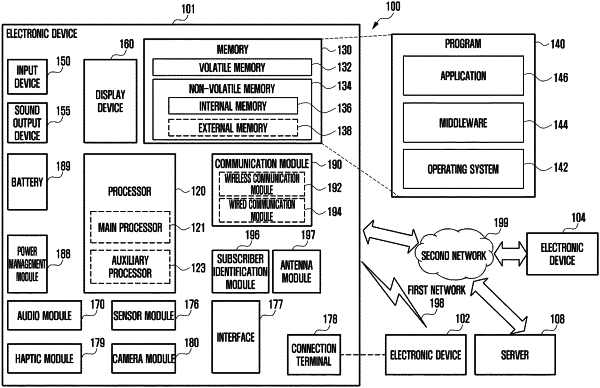| CPC H04W 52/245 (2013.01) [H04W 72/02 (2013.01); H04W 72/541 (2023.01); H04W 88/06 (2013.01); H04W 74/08 (2013.01)] | 12 Claims |

|
1. An electronic device comprising:
a first communication circuit configured to provide first wireless communication;
a second communication circuit configured to provide second wireless communication;
a processor operatively connected to the first communication circuit and the second communication circuit; and
a memory operatively connected to the processor,
wherein the memory stores instructions that cause, when executed, the processor to:
perform first communication with a first base station using a first frequency band through the first communication circuit;
perform second communication with a second base station using a second frequency band through the second communication circuit;
determine whether the first communication and the second communication cause interference with each other;
receive at least one piece of frequency band information from the first base station or the second base station while the processor performs second communication with a second base station using a second frequency band through the second communication circuit;
select a third frequency band, based on the at least one piece of frequency band information;
generate a RACH preamble, based on a random access channel (RACH) configuration associated with the third frequency band based on the selected third frequency band; and
transmit, to the second base station for the second communication, a request by transmitting the RACH,
wherein the third frequency band is different from the second frequency band in at least one of a bandwidth, a center frequency, or a sub-carrier spacing (SCS).
|